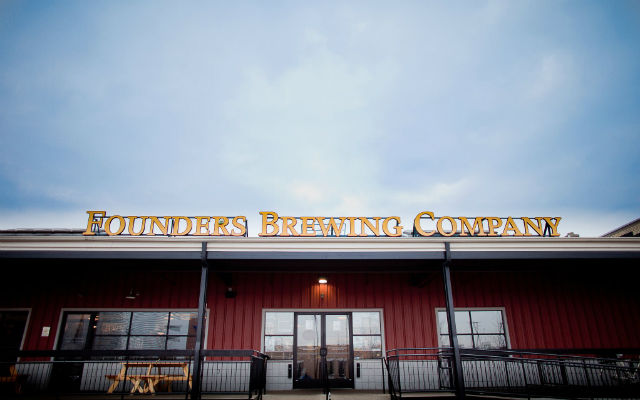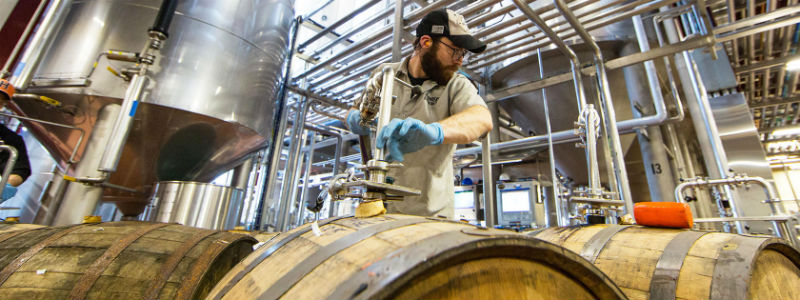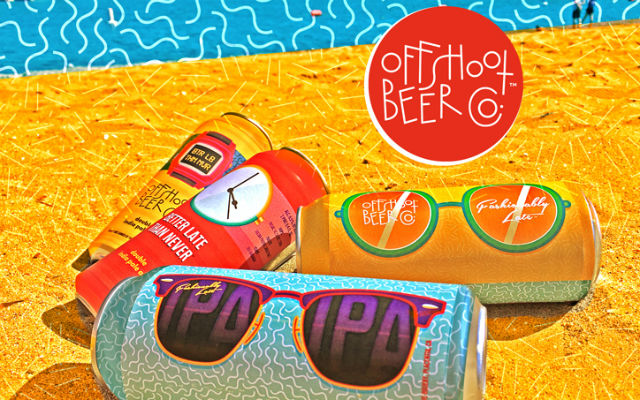
In a continuance to capitalize on the growth of craft beer, breweries are expanding beyond the borders of the U.S. Overseas growth is underdeveloped, yet ripe for new consumer markets.
But don’t think shipping beer and creating new markets is a cakewalk. It’s a long-term play for many and at Founders Brewing in Grand Rapids, Michigan, it plays a small part — about 4 percent of its volume (approximately 350,000 barrels) goes to 23 international countries — in overall sales.
“Now what we found is it’s easy to turn people on, but building the brand takes a lot of effort and work and continue to develop our partners and making a sustainable business,” said Founders VP of International Business Brian May. “Launches are easy, building on that is what depends on how successful you can be.”
Founders is working on tackling those relationships. In 2016 alone, the brewery has nearly doubled the number of countries it is in and May said a 24th nation is soon to be added.
Eventually he hopes to have the infrastructure that is similar to the U.S. markets in terms of marketing, but for now one rep in a country is about the norm with a typical route to market from brewery to shelves at about a month.
The growth opportunities are there, in fact numbers are growing at about two to three times the sales growth that is being done in the U.S., but that doesn’t mean Founders is looking to drive sales overseas. But even the best overseas market is still only an equal to the 20th market in the U.S.
“We are going to win by focusing on the U.S. first,” May said. “But we have a team that is focused on the mid- and long-term. We want to set ourselves up.”
That means increasing a presence in each market with reps. May says hopes are to double manpower in terms of reps by the end of 2017.
“Partners and importers help cover on-premise real well and we want to educate them on our portfolio,” he said. “But we are expanding the team and we feel it’s important to have a good local presence.
“We realized toward the end of [2015] that we were done planning and now it’s time to execute and build a team to go after the craft market overseas.”
The portfolio is similar there, but not all beers make it on a boat. Fresh-hopped beers and draft-only beers don’t make the trip, but hop-forward and beers that are pushed to be drank as fresh as possible, like IPAs, are still big sellers. In fact, Founders best seller “All Day” IPA is No. 1 overseas as well.
Without franchise laws, there are barriers that exist, but May did call it a “free-for-all” when it came to working with distributors in different countries.
“Half the battles is trying to develop and understand each market, what the consumer situation is, the route to market structure,” he said. “Some powerful pub groups control either physically or verbally control those market, so knowing how that work determines success. Often times there are certain partners that focus on the craft market and are beer geeks and it’s like the independent guys here. Some of the smaller partners don’t lack the brands to the next level and build them. So it’s challenging to find the right way to go about the market. So we have made some mistakes.
“You have to unlearn what you know from the U.S. and be thoughtful and study and build relationships and find the right ones to win with.”
May feels that the way to deal with price management overseas is that there is no “one-size-fits-all” structure, which means a price variance is normal.
“It’s up to what consumers will pay for premium craft beer,” he said. “In some cases, that means less margin than we might in other markets. That’s the right way to think … and we do a lot of prep to get good information to set that pricing.”
He said there is a lot of value in logistics as well.
“We are implementing things like that to bring value to our partners and ourselves when it comes to operations,” he said. “You don’t have to pay excise taxes, so out the door it gives a little margin to take that or to lower the price to grab more volume.”
As for the future of craft abroad? May looks to China as an example of growth, noting that if craft beer was at 15 percent of the market share there it would be larger than the entire U.S. beer market.
“It’s the same skill set to win here as abroad, but there are little nuances,” he said. “[We] just have to be thoughtful about that and experimenting on game plans and then aggressively building on the successful ones.”




Be the first to comment